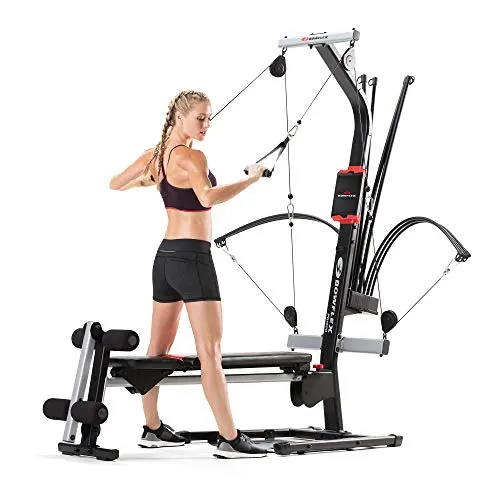Fitness Smartwatches
There’s never been a better selection of fitness trackers, but with choice comes confusion. Which tracker has the features that are right for you and the activities you do? Here are some tips and recommendations for choosing the best tracker for your needs.
After reading this post checkout the Fitness Smartwatches on my Website
This Website is more than just a Blog it’s an Amazon Affiliate Website that makes a small commission form Amazon on any product purchased from this Website, at no extra expense to you. This Post is only meant to give you informative information on the products that are on this Website. All purchases are handled solely by Amazon, that includes payment and shipping information. As this Website doesn’t collect any personnel information.
This is just a sample of what’s availed on the Website
-

2024 Latest Fitness Tracker Watch, Smart Watches for Women Men, Android & iOS Compatibility, Phone Call, Alexa, Pedometer, Health Monitor, Sleep Tracker, Sport Smartwatch, Waterproof
$69.99 Learn More -
Sale!

2024 Newest Fitness Tracker Smart Watches for Women/Men, Phone Call, Alexa, Sleep/health Tracker, Pedometer, Daily activity Tracking Smartwatches, Compatible Android iOS Phone, Christmas Ideas Gifts
Original price was: $69.99.$57.99Current price is: $57.99. Learn More -

A-TGTGA Smart Watch for Women (Dial/Receive Calls,150+ Faces) 1.7″ smartwatch for Android Phones and iPhone, Fitness Tracker with Sleep HR Monitoring,SMS Reminder,IP67 Waterproof
$29.99 Learn More
Where to Start
If you want to give fitness tracking a try (but without a wearable), start by using a mobile app that counts your steps. This method requires little to no investment and could be of interest if you’re a beginner. Our top recommendation for people just getting started with exercise is Map My Fitness. It has hundreds of activities you can track, from vacuuming to rock climbing.
f you run or bicycle, we recommend tracking your runs or rides with an app before going whole-hog and splurging on a tracker. Why? With some trackers, you still need to carry your phone to get accurate pacing, distance, and mapping, so you’ll want to know before you make a purchase if you’re OK with carrying your phone, or if you’d prefer a tracker with built-in GPS so you don’t have to. A few apps we recommend are Runkeeper (for running), Cycle meter (for bicycling), and Strava (for both running and cycling).
How Much Should You Spend on a Fitness Tracker?
Fitness trackers can range from $25 to $400 or more. Some less expensive trackers lack a display, so you can’t see how many steps you’ve taken unless you look at your smartphone.
More expensive trackers usually include built-in optical heart rate monitors and GPS, and often, these features are tailored toward athletes and exercise enthusiasts. Don’t get suckered into buying an expensive tracker if your primary activity is walking. If you walk and don’t do much else, there are great options in the $25 to $99 range.
If you work out a lot and want ample fitness-tracking options, we recommend spending at least $99, as that’s the price point where you’ll start to see the features that are useful to very active users.
Choose Your Tracker Style
One important question to ask yourself before choosing a fitness tracker is the type of form factor you want. Most these days are worn on the wrist, though you can get clip-ons, and fitness-tracking rings. Bracelets and watches are hard to lose. Clip-ons can fall off or get thrown into the wash.
That said, bracelets and watches can get in the way when typing on a computer or sleeping, for example. If you’re bothered by having something on your wrist, you’re probably better off with a clip-on, although this style isn’t nearly as popular as it used to be.
The Oura Ring, meanwhile, brings health tracking to your fingers. The Oura’s ability to track workouts is pretty basic compared with a wrist-worn model, but it offers comprehensive sleep tracking and is more comfortable to wear to bed than a watch or wristband, making it an intriguing alternative.
Do You Want Heart Rate Monitoring?
Heart rate monitoring sounds like the best feature ever, but there are different kinds of heart rate monitors, and frankly, some people don’t need it at all. A built-in heart rate monitor can drive up the price.
Optical heart rate monitors are the ones built into the device itself. Some very good fitness trackers don’t have a heart rate monitor but can pair with a chest strap. Most every device from Garmin and Polar supports a chest strap (like the excellent Polar-H10), and you can usually bundle one in when purchasing a tracker for an extra $40 or $50.
Finally, if you’re interested in knowing your resting heart rate, you don’t need to buy a tracker with an optical heart rate monitor to find it. Many smartphone apps let you take your heart rate in about 15 seconds using the phone’s camera. Check your pulse once or twice a day, and you’re good to go.
Will You Track Sleep?
There are also dedicated sleep trackers out there that attach to your mattress, but we haven’t found them to offer an appreciable advantage over wrist-based trackers. And wearable trackers can do a lot more than simply track your rest. If you don’t like the idea of wearing something on your wrist to bed and need a new mattress.
Sport-Specific Fitness Trackers
Swimmers will want a waterproof tracker, but keep in mind that not all water-safe trackers actually track swimming. Runners will probably want a watch that shows time, distance, pace, and lap time, at the very least. If you want good accuracy for those metrics without having to carry a smartphone, you need a runner’s watch with built-in GPS.
Also consider the display. If you want to see your stats at all times, or simply use your tracker as a wristwatch, look for one with an always-on display. How you control the tracker is also important. If you like to run in the cold while wearing gloves, you may want to steer clear of devices that only have touch-enabled displays.
Cyclists have even more considerations. There’s a difference between tracking how many miles you
pedal and calories you burn versus monitoring your power and cadence. If all you want is the former, you can find a few fitness trackers that support bicycling as an activity. More serious cyclists will want a device that can pair with additional bike equipment, like a cadence sensor, and should look at devices from sport-specific companies, like Garmin and Polar.
The Fitness App Experience
A fitness tracker’s app matters. Whether on your phone or on the web, the app is absolutely vital because it is where you make sense of the information the tracker collects. Fitbit has one of the best apps and websites we’ve tested. It lets you record all kinds of data, such as your weight, menstrual cycles, calories and water consumed, and stress level.
Smartwatch vs. Fitness Tracker
Most fitness trackers have some smartwatch functionality, and most smartwatches have fitness features, too. The Fitbit Versa 3 comes close to blending both worlds, but at the moment it still lags far behind the Apple Watch in terms of third-party app support.
The Apple Watch Series 6 places more of an emphasis on health and fitness tracking than any other smartwatch we’ve seen. It can calculate your blood oxygen saturation (SpO2) level on demand in 15 seconds and even has an FDA-approved electrocardiogram (ECG) function that generates a PDF of your heart rhythm you can share with your doctor, which is a feature you won’t find on any of the other trackers listed here. But as its name implies, it’s first and foremost a smartwatch.




